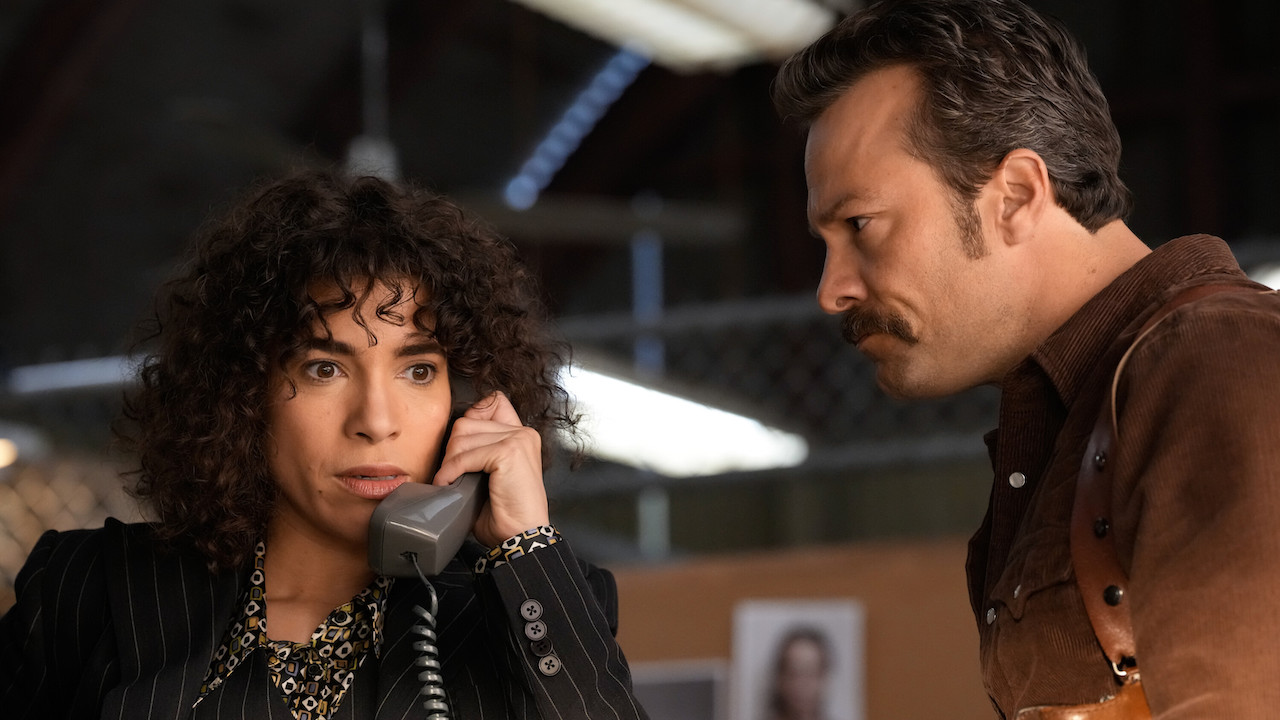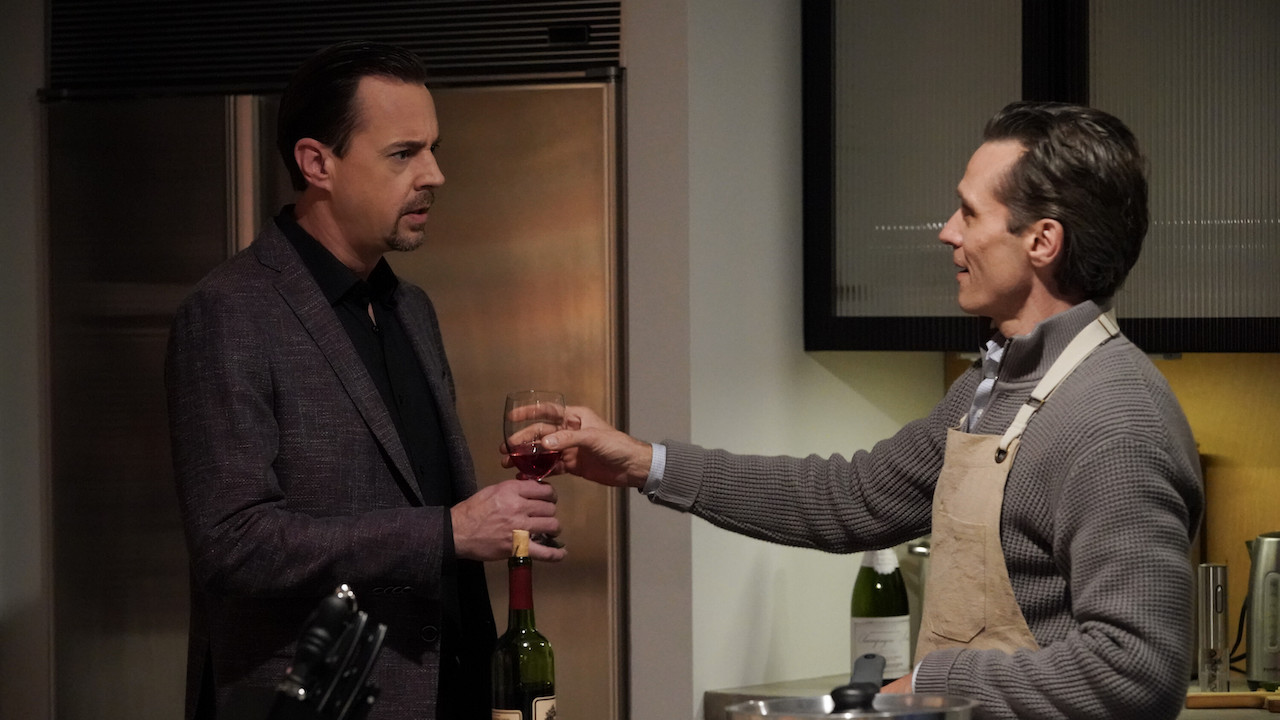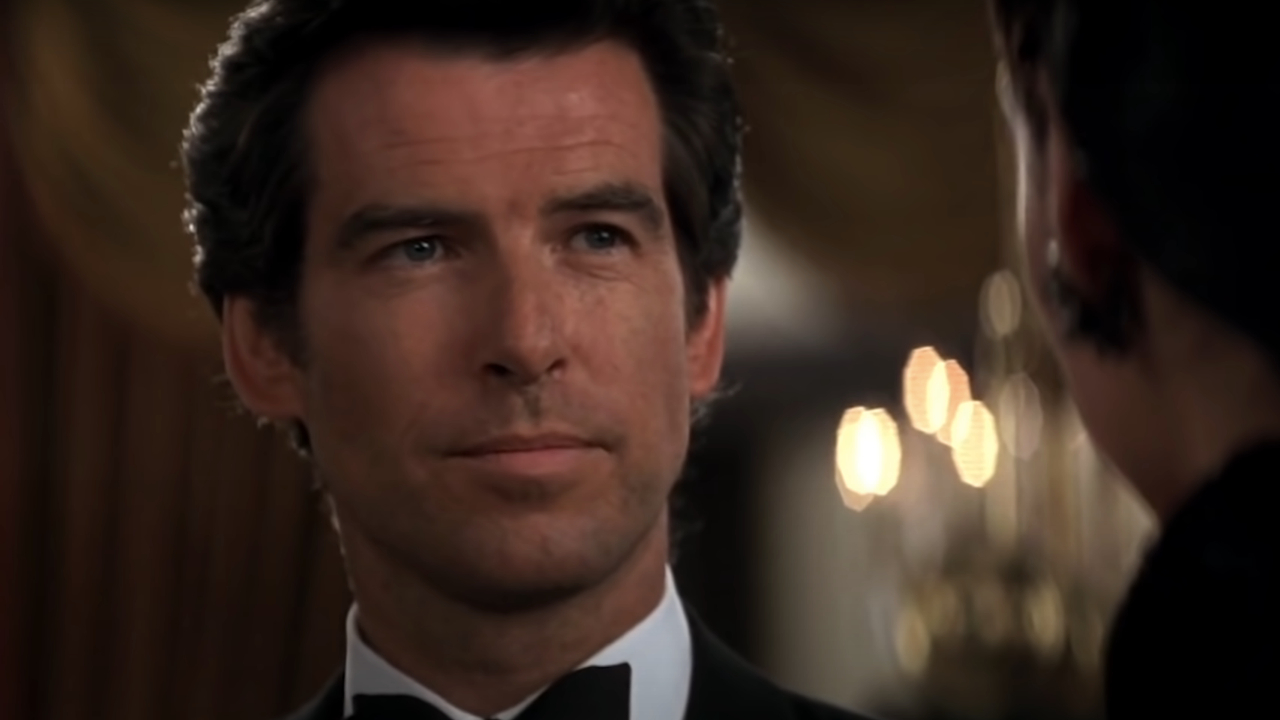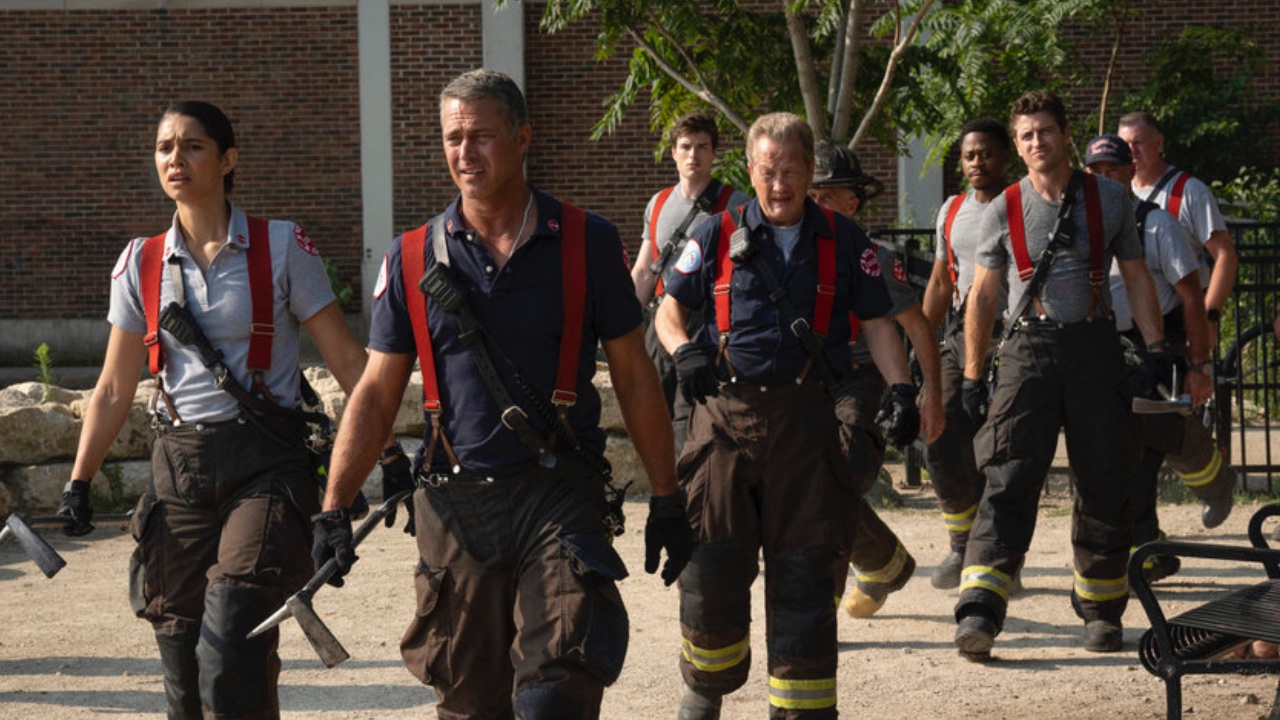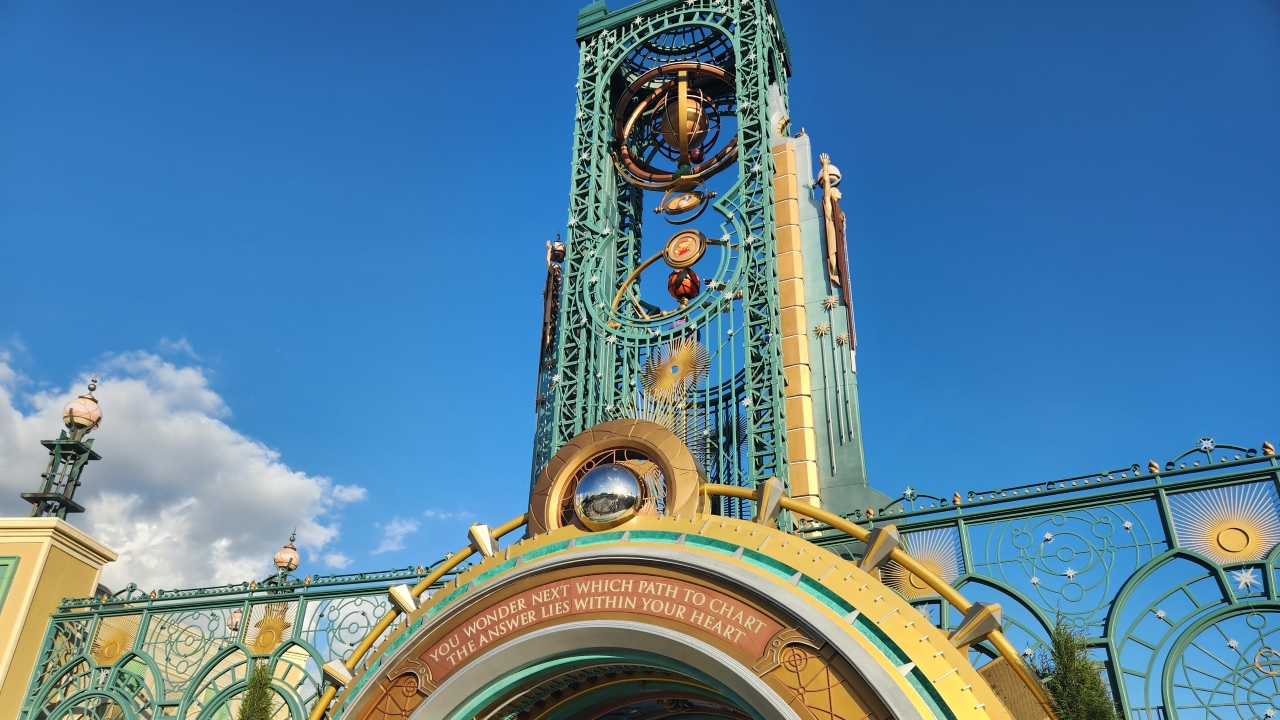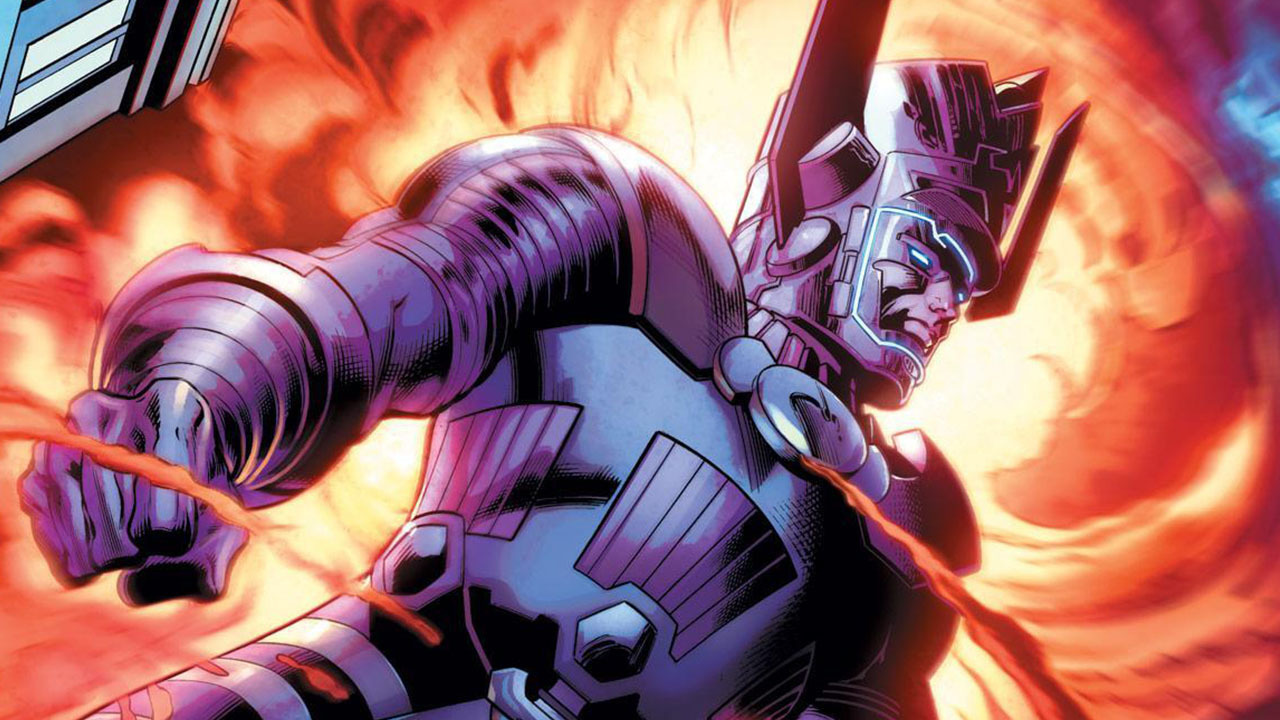To 3D Or Not To 3D: Buy The Right Legend Of The Guardians Ticket
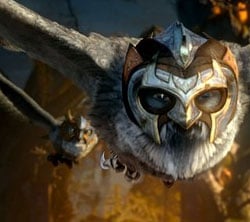
As a would be moviegoer the biggest decision you face when you show up at a theater right now isn't which movie to see, but how to see it. Legend of the Guardians: The Owls of Ga'Hoole arrives in 3D this weekend and it's yet another entry in the all but endless stream of 3D releases being churned out of Hollywood and sent to screens across the country. I saw it this week and, for the record, my reaction to it was pretty mixed. My full review is here, but this won't be a discussion of Legend of the Guardian's overall merits as a film.
Instead my goal here is to help you, as a ticket buyer decide how to see it. 3D ticket prices are much higher than 2D tickets, yet 3D isn't always the best way to see every movie. To help you navigate your way through the increasingly thick fog clogging up your movie theater, we've developed a straightforward, unbiased, 7-point system for determining whether 3D is the right choice for you when seeing a film. In order for this guide to work, for better or worse, I'll ignore the quality of Legend of the Guardians as a story and instead give a technical assessment of the movie's 3D. Using that, you'll have the guide you need to buy the right Legend of the Guardians ticket in the right format, should you choose to see it. Here we go!
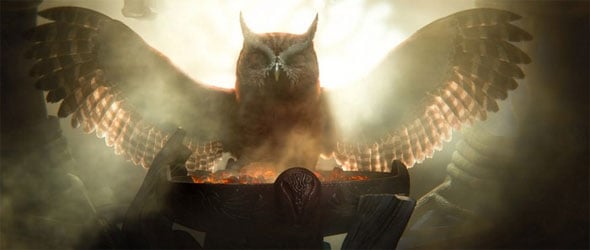
Does It Fit?
Because of their tendency towards sharply defined images and bright colors, 3D seems to work most consistently well on computer animated movies, and Legend of the Guardians is a computer animated movie. Perhaps even more importantly it's the right kind of story to make the most out of 3D, filled with scene after scene of high-flying chase scenes and deep, rich, sharply defined environments. Flight sequences, in particular, can be thrilling when done properly with 3D and since this is a movie entirely about owls, almost its entire running time is filled with some sort of flying, flapping, or hovering. 3D was the right move for Legend of the Guardians.
3D Fit Score: 5/5
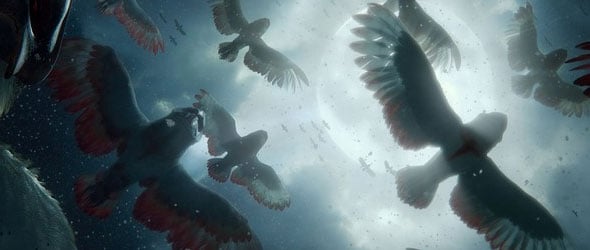
Advance Planning And Effort
While other movies have been content simply to mimic the way 3D has been done by other films, director Zack Snyder approached Legend of the Guardians with a desire to push the technology even further. Here's how Snyder explains it: “We played around with the literal eye of the movie… Though it's counterintuitive for computer animation, we really tried to manipulate the tools of 3D to make it work...to stretch those concepts.” Guardians was planned as a 3D movie from the beginning and Snyder went through a lot of effort not just to get the 3D right but to use it in a way no one else had. They went out and watched real owls, to research the real-life feeling of weight they have as they woosh around, in an attempt to capture that with their 3D. They studied virtual cameras in Australia and played with the speed of the film to really nail the life-like feeling they were looking for. Snyder didn't set out just to make a 3D movie, he set out to make 3D his own and in the process, maybe make it even better.
Planning And Effort Score: 5/5
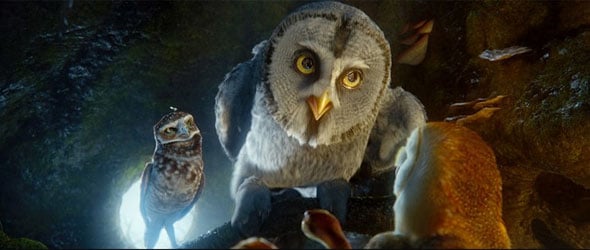
Picture Depth
CINEMABLEND NEWSLETTER
Your Daily Blend of Entertainment News
Used properly 3D can give the picture in front of you the illusion of extra depth and make it feel as though you're watching something happening through a window, rather than flat images projected on a screen. Legend of the Guardians does that brilliantly. Not just in flying sequences or in long shots, but in close-up moments and enclosed spaces too. When Snyder's camera follows the owls inside a tree, the hole their in looks like something that really goes back behind the screen. Even the characters themselves have depth, their feathers feel as though they actually have space between them as they wave in the wind, their wings move back and forth changing perspective as they wheel and turn through the air. But traditional depth is really just the beginning of what Snyder has done here. More on that in a minute.
Picture Depth Score: 5/5
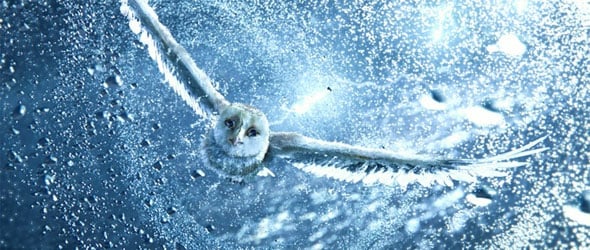
Flair
3D can be gimmicky, with characters thrusting things towards the camera in an effort to scare the audience. But those gimmicks can also be used to add extra value. 3D can come out of the screen as well as go in, and if you're going to use the technology, why not use all the tools available to you. Filmmakers too one dimensional to use 3D's full potential are wasting half its power. Mark Legend of the Guardians down as the first movie to use all of it. Owl wings seem as though they're about to burst from the screen as the creatures fly by. Rain drops fly not out of the screen, but out of the audience into the screen and onto the characters soaring through the air in front of us. Zack Snyder has found a way to make light, even, seem three-dimensional as the sun's rays stream out of the screen from one side of the other and onto the heads of the audience members on one side of the theater or the other.
It's not some gimmick meant to make you jump when someone throw's something at the camera, instead it's an attempt at recreating the natural feeling of really being there. 3D is used here not just to make the image in front of you look deeper, but to make it feel like something that's more than a picture, like something that at any moment could be all around you, is all around you. It's not confined to a single, gimmicky moment in the film where something floats over the audience, the entire movie is constructed that way, unrestricted by the boundaries of what's inside the screen and what's outside it. Snyder manages 3D perspective brilliantly, in a way no one else has managed so completely before him.
Flair Score: 5/5
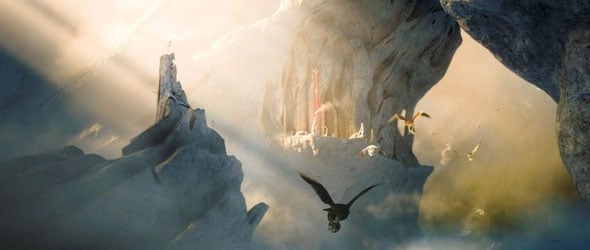
Brightness
One of the biggest problems with 3D is the fog created by those filtered glasses you're forced to wear. This could have been a problem for Guardians, since it's a movie about owls and they're night time creatures. Snyder, almost certainly aware of the difficulties of darkness when it comes to shooting 3D, solves it by setting almost his entire movie in this amazing, perpetual twilight. The movie's lit like a photographer's lighting dream, with brilliant rays of fading light streaming across the landscape. That kind of lighting makes everything seem sharper and more focused, the movie practically glows with an all encompassing, natural feeling light. It's done so well that even in theaters which haven't properly compensated for the problems of 3D by increasing the brightness on their projectors, it's easy to imagine Legend of the Guardians being not only entirely watchable, but utterly enjoyable. Snyder's approach is a beautiful and subtle solution, by far the best anyone has come up with so far to combat this problem.
Brightness Score: 5/5
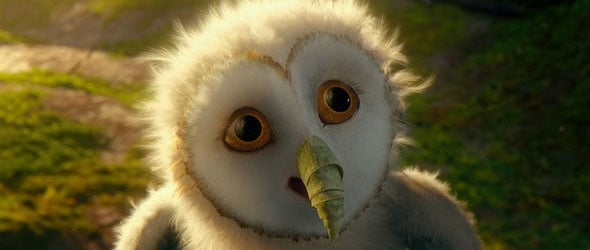
Audience Health
Because of the way it's lit, Legend of the Guardians is actually kind of soothing. Like watching a perpetual sunset, which ok, just happens to have angry birds trying to slash each other to ribbons with knives in it. You'll walk out not only feeling good, but probably refreshed and relaxed as well. The headaches caused by 3D dimness are eliminated and because it's animated and so well planned the 3D effects never warp or distort the way they do on lesser 3D films. Some people simply can't see 3D but for the average viewer, it's hard to imagine Legend of the Guardians causing any of the nausea or dizziness or any of the other health problems often caused by viewing other 3D movies. This is as good as it gets.
Health Score: 5/5
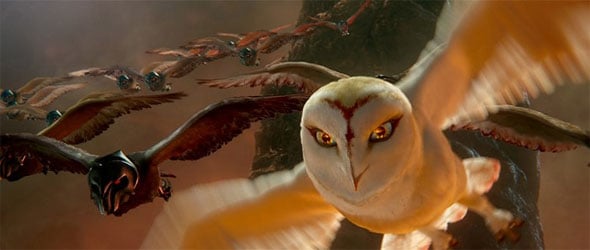
The Glasses Off Test
The last time you took off your glasses while watching a good 3D movie, you probably noticed that during the most intensive parts of the film, the picture on screen became even fuzzier. The easiest way to explain this is to say that the blurrier the image on screen appears when seen without glasses, the deeper and more vibrant the 3D is likely to be with your glasses on. So to test this, I removed my 3D glasses periodically during Legend of the Guardians to examined the way the movie's 3D effects were being created. In most 3D movies the action scenes are often where it becomes the most blurry, while talking scenes use far less 3D. In the case of Guardians the entire movie is a big blur without your glasses, but it's noteworthy that it becomes even more so not just during action scenes, but specific, close in shots. Snyder seems use the technology in a way that provides depth by increasing it and decreasing the level of 3D used depending camera's perspective and the requirements of the scene, and not based on whether this is a spendy money shot or not. He's pushing the technology to the limits of possibility here, in every scene.
Glasses Off Test: 5/5
| SCORES RECAP | |
| 3D Fit | 5 |
| Planning and Effort | 5 |
| Picture Depth | 5 |
| Flair | 5 |
| Brightness | 5 |
| Audience Health | 5 |
| The Glasses Test | 5 |
| Total Score | 35 (out of a possible 35) |
Final Verdict: Legend of the Guardians is a the new high watermark in 3D. Forget Avatar, this is the best 3D anyone has done so far. It's really the only way to see this movie. Normally I'm not one to suggest that 3D, no matter how good, will ever make any movie better. But in this case I can't think of any reason to see it at all unless you're seeing it in 3D. It's an amazing achievement from a technology that I think most had assumed we'd already seen the best from. We hadn't. This is 3D at its possible best.
For more 3D analysis, visit our To 3D Or Not To 3D archive right here.


